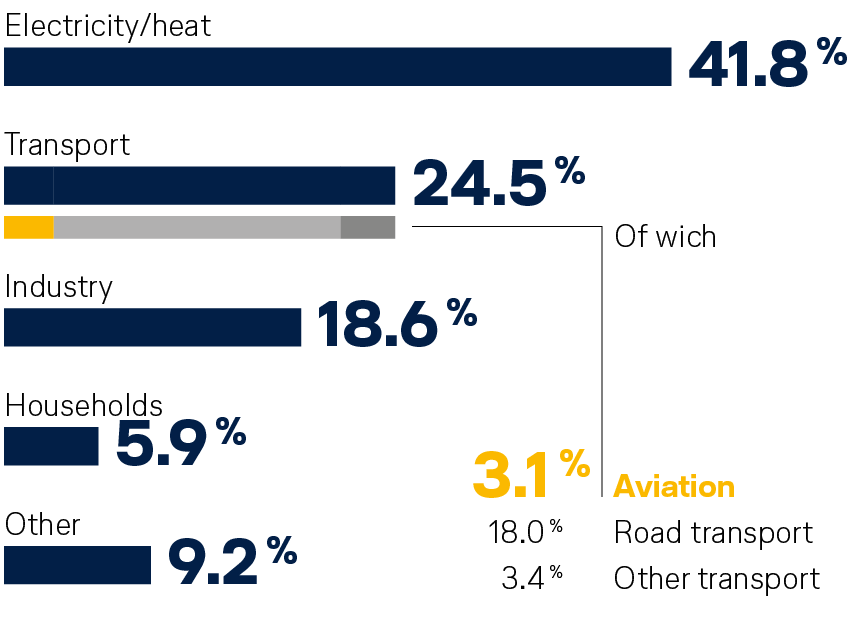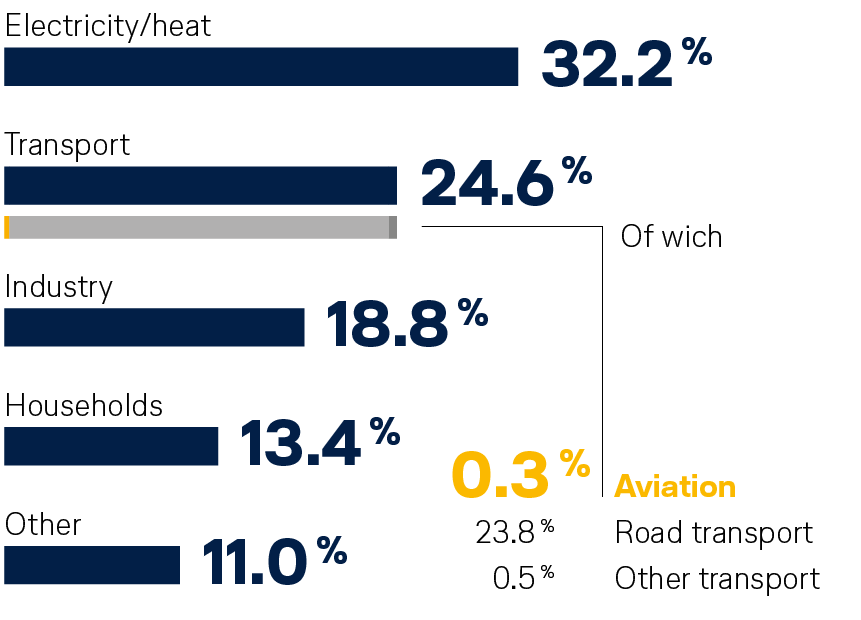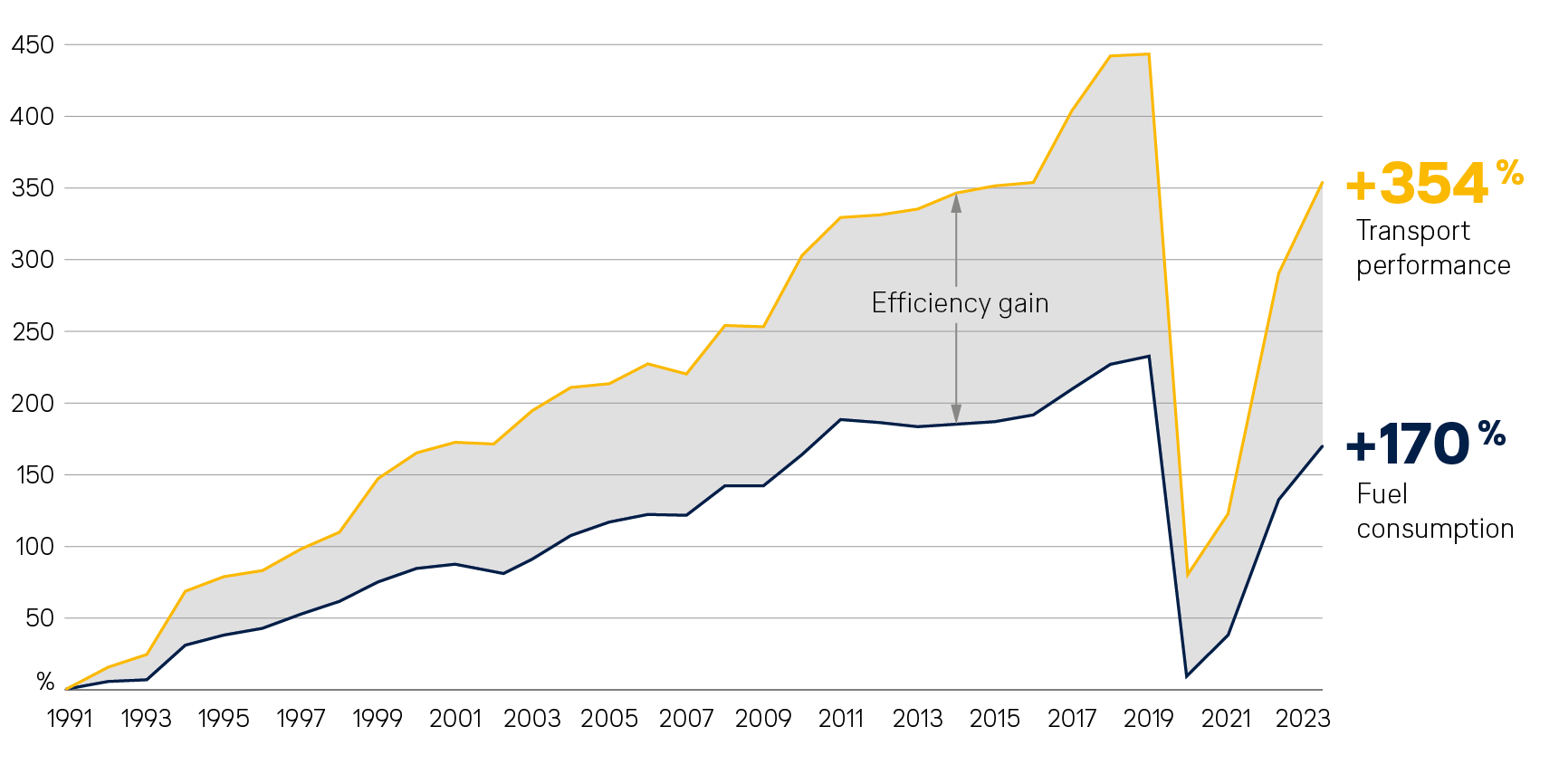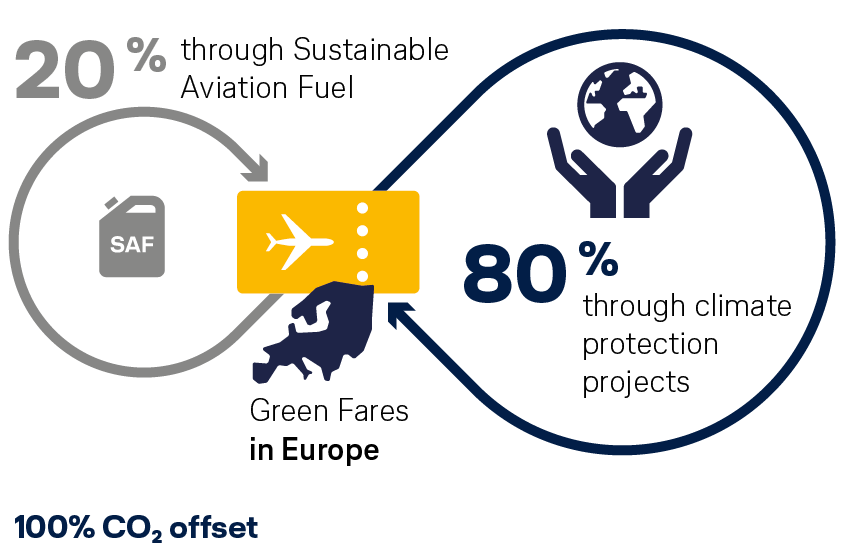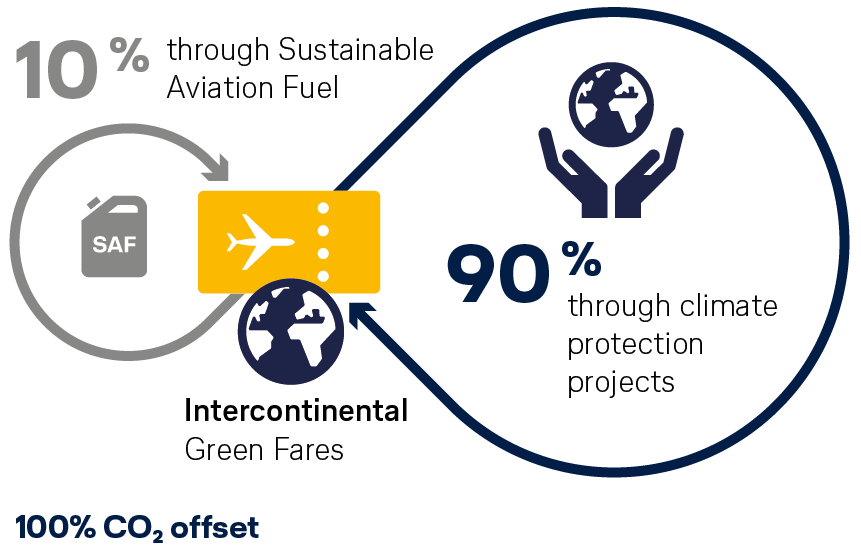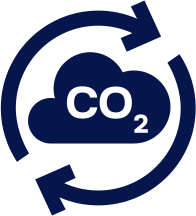Goal: CO2-neutral air traffic
The Lufthansa Group is aiming for a neutral CO2 balance by 2050 and wants to halve its net CO2 emissions by 2030 compared to 2019. The 2030 target was validated by the independent Science Based Targets Initiative (SBTi) in August 2022. This makes the Lufthansa Group Europe's first airline group with a science-based CO2 reduction target that is in line with the Paris Agreement.
Measures for more sustainable flying
The Lufthansa Group essentially relies on five pillars for effective climate protection:
- Fleet modernization: By 2032, the Group airlines will receive more than 250 brand-new aircraft, including around 100 long-haul aircraft of the latest design. Compared to their predecessors, they consume up to 30 percent less fuel and emit correspondingly less CO2. Older aircraft will be taken out of service. Every year, the Lufthansa Group invests up to 2.5 billion euros in the most extensive fleet modernization program in its history.
- Sustainable Aviation Fuels (SAF): SAF are another important key to more sustainable flying. The Lufthansa Group is one of the largest purchasers of SAF worldwide, even though the quantities of SAF available are currently still small. Additionally, the Lufthansa Group is driving forward the development and industrialization of next-generation sustainable fuels: Power-to-Liquid (PtL) technology can be used to produce sustainable kerosene from green electricity, water and CO2. Sun-to-liquid technology (StL) uses solar heat to convert CO2 into fuel.
- Optimization of flight operations: Through technological innovations, the Lufthansa Group continuously improves the fuel efficiency of its existing fleet. Take AeroSHARK, for example: the sharkskin developed by Lufthansa Technik and BASF reduces the drag of aircraft and thus cuts kerosene consumption by around one percent. Lufthansa was the first airline group worldwide to equip selected aircraft with AeroSHARK, with more to follow.
- CO2 compensation: With the “Green Fare Tickets”, the Lufthansa Group offers its passengers a fare in which individual flight-related CO2 emissions are compensated. Throughout Europe, 20 percent of the CO2 emissions are offset by using SAF and 80 percent through a contribution to high-quality climate protection projects. On intercontinental routes, 10 percent of flight-related CO2 emissions are reduced by using SAF, while the remaining 90 percent are offset via climate protection projects. In the first year since their introduction, an average of three percent of passengers have opted for these more sustainable fares, and the trend is rising.
- Intermodality: The Lufthansa Group is continuously expanding its cooperation with rail providers. Its intermodal network now covers more than 40 destinations in five European countries with more than 3,000 connections per week. For every German feeder flight to Frankfurt, for example, Lufthansa offers an alternative by rail. The company is also expanding the strategic integration of air and rail in Asia. For more passengers to opt for rail, an efficient rail system and good connections between the hubs and long-distance rail services are needed.
But policymakers can also do more than just regulate. One example: more efficient airspace management and shorter flight routes would significantly reduce kerosene consumption in Europe.
Top rating in the renowned CDP climate ranking
In the global climate ranking 2023 of the non-profit organization CDP (formerly Carbon Disclosure Project), the Lufthansa Group has once again received a top rating for its CO2 reduction strategy and its implementation. On a scale from “A” (best result) to “D-”, the company was classified in the highest ranking band for the second year in a row with the scoring result “A-”.

![[Translate to EN:] Lufthansa aircraft climbing over clouds](/fileadmin/user_upload/policy_hub/themen/klimaschutz/a350-sky_header.jpg)
